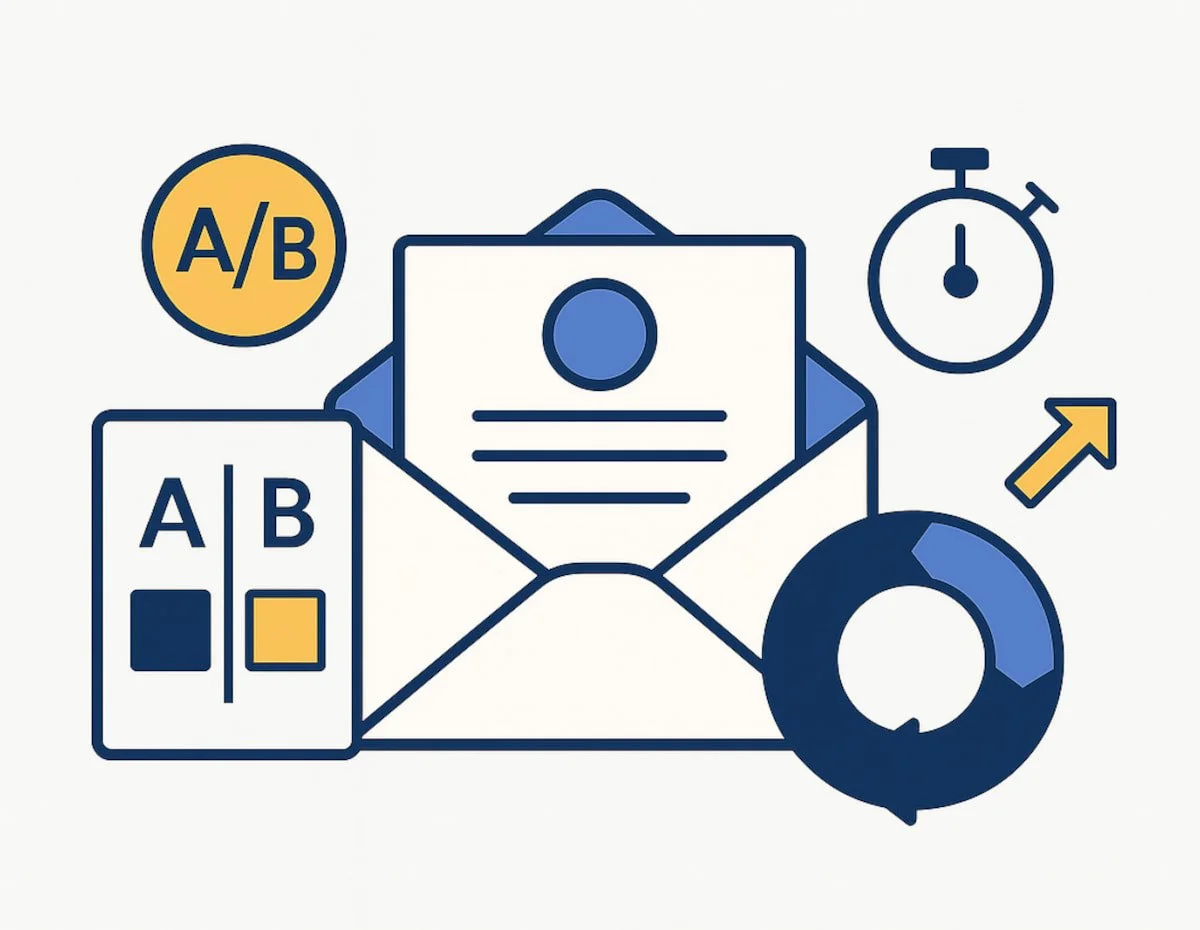3 Simple A/B Tests That Supercharge Lifecycle Email Results
Lifecycle email marketing isn’t about sending more, it’s about sending smarter. The beauty of email is that you get real-time feedback, which means you don’t need to guess what’s working. But too many teams either skip testing entirely or overcomplicate it. The result? Stalled performance and missed opportunities.
The good news? You don’t need dozens of variables to see a lift. Just three well-designed A/B tests—each focused on different stages of the customer lifecycle—can help you boost opens, clicks, and conversions. And best of all, these tests are easy to implement and yield actionable insights fast.
Let’s break down three high-impact A/B tests your email marketing agency, internal team, or lifecycle marketer can start using this week.
1. Subject Line vs. Subject Line: Testing for the Open
First impressions matter. If your lifecycle emails aren’t getting opened, they’re not getting read. And without that, all your segmentation, content strategy, and design go to waste.
That’s where subject line testing shines. It’s one of the simplest and most impactful A/B tests you can run. Yet, many marketers make the mistake of testing only obvious differences like “short vs. long” or “title case vs. lowercase.” The most revealing tests dig deeper.
Try testing these variables:
Curiosity vs. clarity: A subject line that teases ("You’re not going to want to miss this...") vs. one that tells ("Get 20% off your next order").
Personalization vs. generic: “Kevin, ready for your next adventure?” vs. “Explore new arrivals now.”
Emoji vs. no emoji: Test whether a relevant emoji improves visibility or distracts.
Why this test works:
It focuses on the gateway to your email: the subject line. Even small tweaks here can deliver a big bump in open rates, which leads to more data down the funnel. Bonus tip: Don’t forget the preheader, it’s the second subject line, and testing it can unlock additional gains.
And remember, not all segments behave the same. A new subscriber might respond better to curiosity, while loyal customers may prefer clarity and incentives. That’s where customer lifecycle management and segmented testing become essential.
2. Call to Action Upgrade: Button Text and Placement
If your emails are being opened but not clicked, your next test should focus on the call to action (CTA). Often, lifecycle marketers spend hours perfecting design and messaging but don’t test the key driver of conversions—the CTA.
Don’t settle for generic buttons like “Shop Now” or “Learn More.” Instead, test microcopy that reflects the value behind the click.
Try testing these elements:
CTA wording: “Unlock My Offer” vs. “Get 20% Off” vs. “Start My Free Trial”
CTA placement: Top vs. bottom, or repeated mid-email and at the footer
Number of CTAs: One strong CTA vs. multiple soft CTAs based on sections
Why this test works:
Your CTA is the bridge between engagement and action. A small shift in language or placement can increase click-through rates (CTR) dramatically. For lifecycle emails—especially post-purchase flows or win-back campaigns—a tailored, benefit-driven CTA can mean the difference between retention and churn.
This is where email campaign management and testing discipline matter. Document what you’re testing and rotate your variables methodically. It’s not just about finding the “best” button; it’s about learning how your audience behaves at different stages.
3. Plain Text vs. Designed Email: Which Format Converts Better?
Here’s a test that surprises most marketers: plain text vs. HTML-designed emails. While polished, branded templates are often the default, plain-text emails can outperform them in specific stages of the customer lifecycle.
Why? Because plain-text emails feel more personal. They read like a 1:1 message from a real person, not a brand megaphone.
Try testing this when:
You’re sending onboarding or welcome messages
You’re making an offer that’s meant to be a personal outreach (like referral asks or win-back campaigns)
You’re trying to increase replies or engagement, not just clicks
What to test:
Tone: A friendly, personal tone (“Thought you’d love this...”) vs. a brand-forward tone (“We’re excited to share...”)
Format: Plain text with a simple link vs. full HTML design with buttons, images, and branded sections
From name: “Kevin at [Your Brand]” vs. the brand name alone
Why this test works:
In lifecycle email marketing, trust is currency. And sometimes, dropping the branding and speaking human-to-human cuts through the noise. You might not replace all your campaigns with plain text, but you’ll quickly learn which stages respond best to a low-friction, high-trust format.
Plus, plain text emails are lighter, load faster, and are easier to produce.
A/B Testing Best Practices: Make It Meaningful
No matter which test you run, keep these principles in mind:
1. Test one variable at a time
If you change both the subject line and the CTA in the same test, you won’t know what made the biggest difference overall. Isolate your variable to get clear insights.
2. Let your test run long enough
Aim for statistical significance. Depending on your list size, you may need 24–72 hours or more for valid results.
3. Segment when it matters (it usually does)
Lifecycle stages matter. A test that wins with new subscribers may flop with loyal customers. Your lifecycle marketing agency or team should segment tests when audience behavior differs.
4. Document and apply your learnings
Too often, test results sit in a spreadsheet no one reads. Use your findings to inform future campaigns, update templates, and refine automations.
These habits are the foundation of marketing automation strategies that evolve instead of growing stale.
Start Simple, Scale Smart
You don’t need to test every email in your lifecycle. But you do need to test with intention. These three A/B tests—subject line, CTA, and format—are powerful levers for improving performance fast. And once you’ve run them, you can expand your testing roadmap to dig deeper into segments, send times, incentives, and beyond.
Testing isn’t just for the technically savvy or enterprise teams. It’s for email marketing experts who want to serve their audience better, convert more customers, and create meaningful connections with every send.
If you're looking to take your A/B testing and lifecycle strategy further, working with a specialized lifecycle marketing agency can help you fast-track learnings, streamline execution, and scale what works. Schedule a call with LEO.

